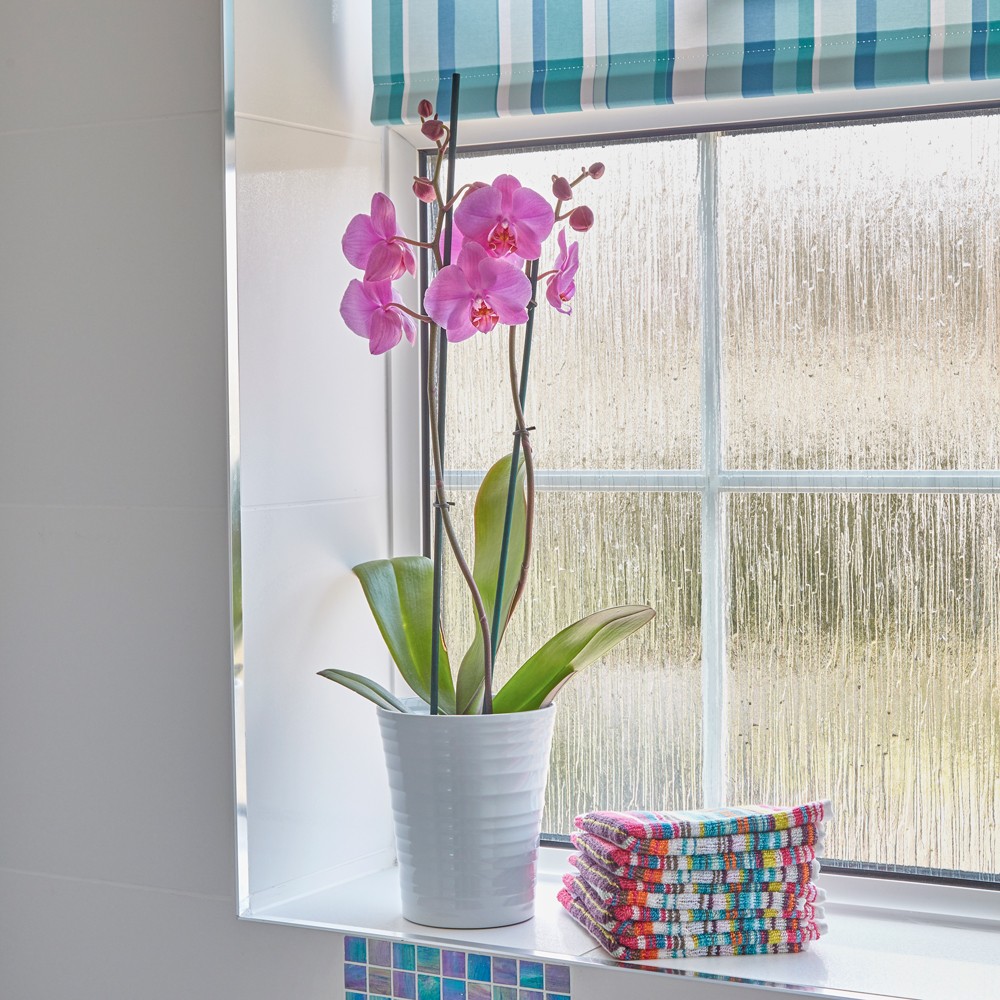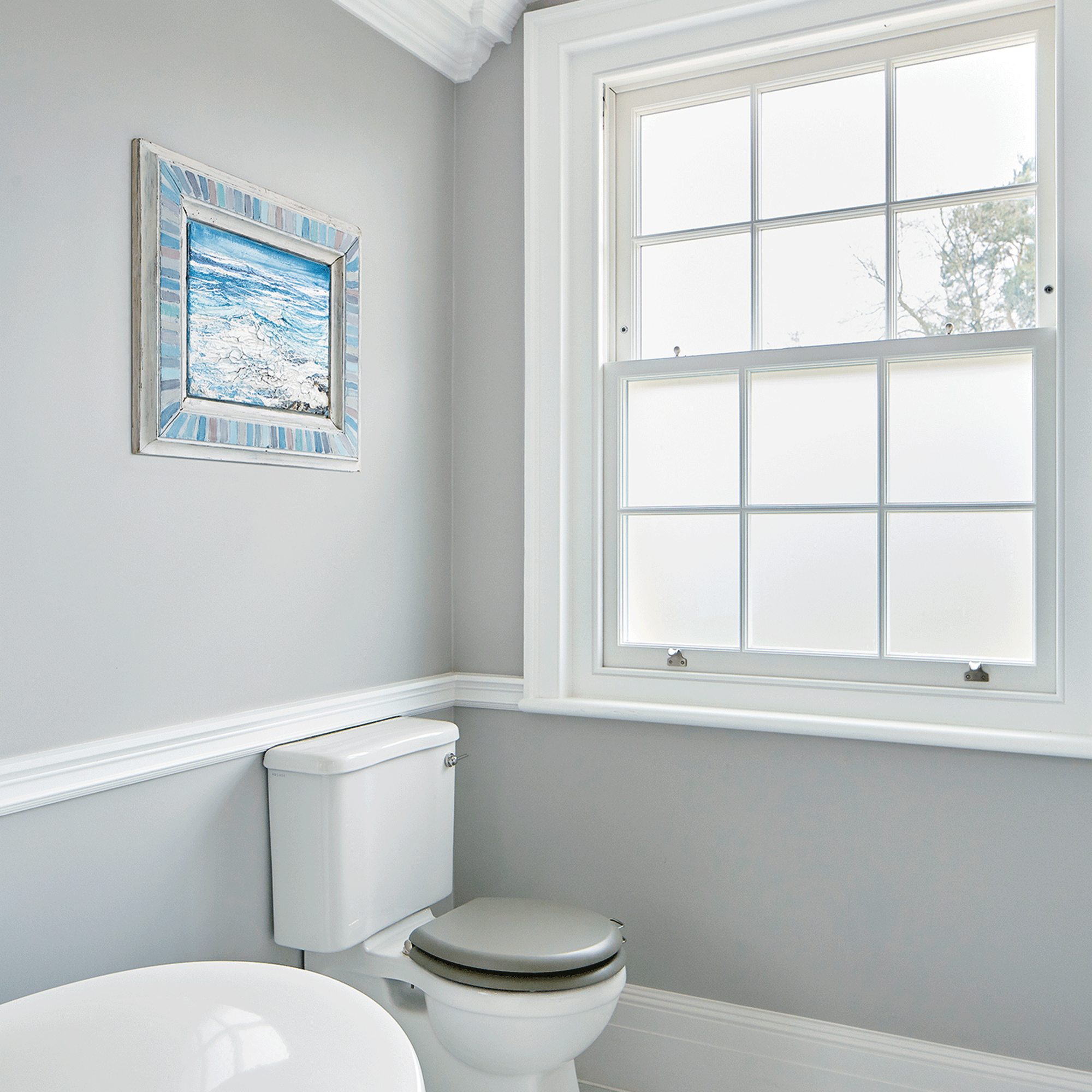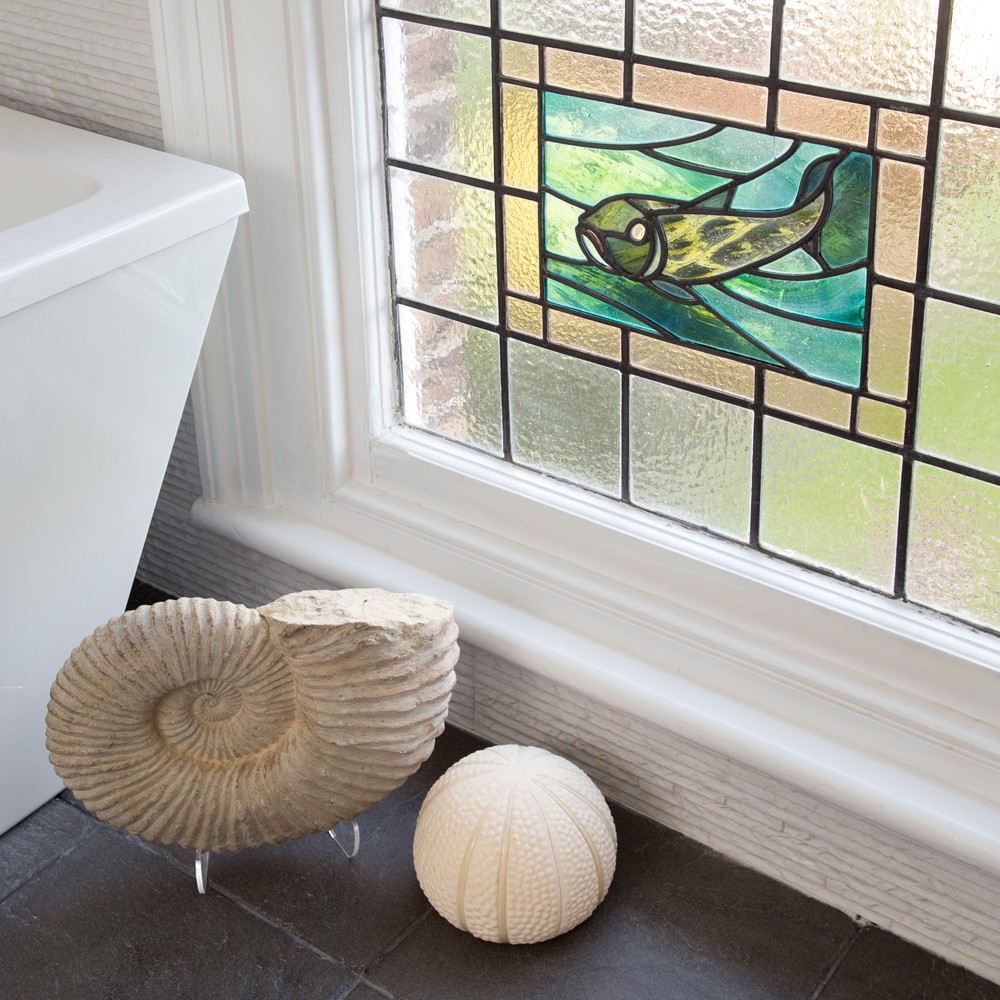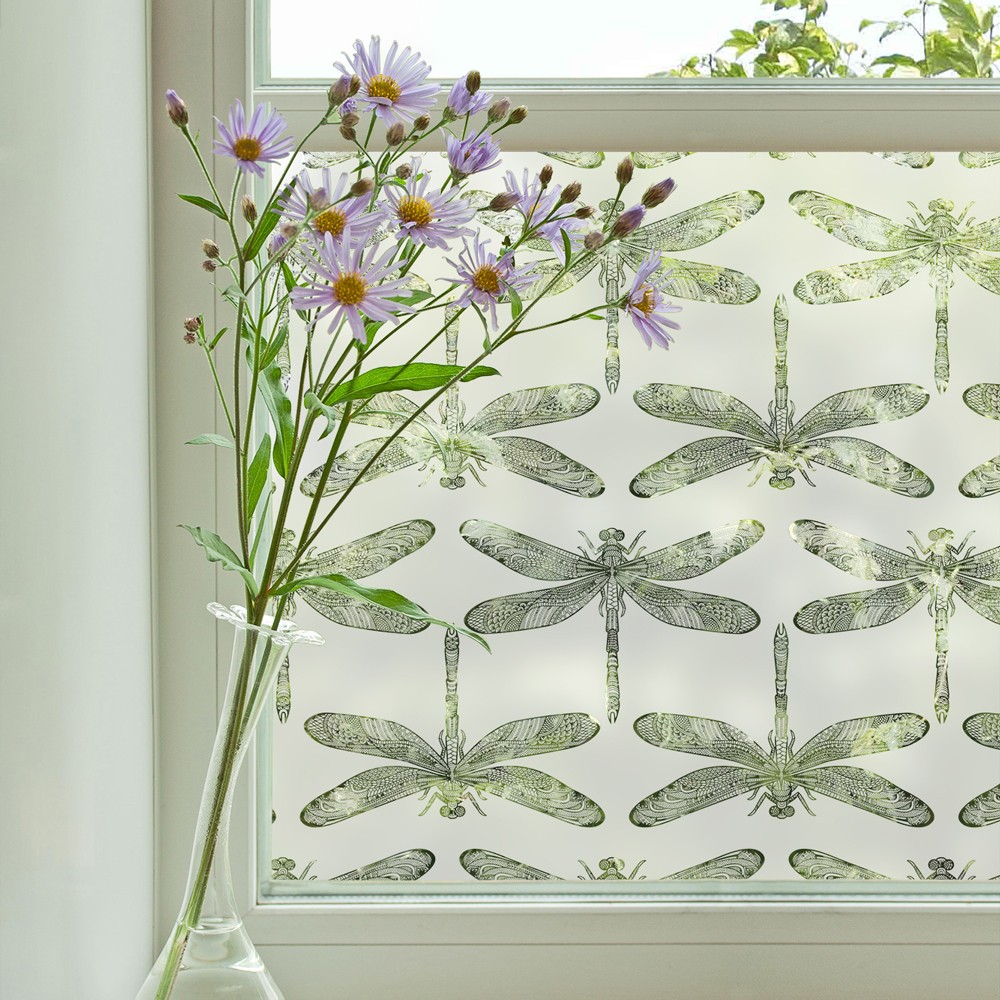Obscure glass types - how to choose the right one for your bathroom
Obscure glass can conceal your bathroom from view, and there's an array of decorative patterns and finishes to choose from
Katie Sims

Obscure glass types will probably never go out of fashion. Their main attraction is the privacy they offer, which depending on the view from your bathroom window, may be a non-negotiable; but even aside from their practical offering, they're a desirable feature in modern bathroom ideas because they incorporate the window as a stylish part of the design.
Why have a plain old window when there's so many fabulous obscure glass types to choose from? From frosted, to stained, to window film, the obscure glass opportunities are endless. And don't worry, whatever obscure glass type you choose, you can keep it in pristine condition by learning how to clean windows properly.
So if you're looking to upgrade to decorative glazing, you first need to know about the different obscure glass types so that you can pick the best one for your bathroom. We've asked the experts and compiled all the relevant info into this essential guide.
Obscured glass types - everything you need to know
'Obscure glass, also known as textured glass, is the category name for a wide range of products which all reduce transparency through the glass, both in windows and doors, and for internal use,' explains Leo Pyrah, Marketing and Value-Added Manager, Pilkington. 'There are lots of options to choose from, so it’s important to consider both the style and the level of privacy that best meets your needs.'
Firstly, decide on the level of privacy you want the obscure glass to offer. Textured glass will have a rating from 1 to 5, with 1 giving the most visibility, and 5 giving the least. So if you want your obscure glass to offer lots of privacy, look for glass types with ratings of 4 and above.
The most common obscure glass types are textured glass, frosted glass, satinised glass, coloured or stained glass, and window film.
Best textured glass options

Textured glass is a rolled, patterned glass with the design impressed onto one side of the surface. It makes the glass translucent and non-transparent, distorting views while also letting in plenty of light.
Sign up to our newsletter for style inspiration, real homes, project and garden advice and shopping know-how
Designs vary from simple ripples and reeded lines to more decorative florals, foliage and geometrics, and there are several different gradings available, according to the privacy level (or obscuration) required.
Frosted glass

Try sandblasted or acid-etched glass. Both use abrasives to create a frosted look that gives privacy and diffuses the light. You can choose the level of opacity, from a light frosting to fully opaque, and either an all-over treatment or a patterned effect.
Acid etching is a specialist technique so tends to be pricier, while sandblasting can create lots of different effects but is prone to finger marks. Designs vary from standard geometrics to your own bespoke sketch.
Satinised glass

'Satinised glass is a type of float glass that is finished with an obscured or opaque look', says Ian Mccormack, Glass Specialist, Carlen Glass. 'It has a satin finish on one side of the glass that is commonly used for privacy. This means it can be used in areas where full privacy is required, such as bathrooms.'
Satinised glass has been chemically treated to give it a misty look. It's less decorative than other obscure glass types, but ideal if privacy is your main concern.
Coloured or stained glass

A stained glass window treatment is a great way of adding colour. Made using sections of glass held together with leading, designs vary from a simple border or coloured insets to decorative period patterns. Choose from standard designs or commission your own.
Window film

Window film is one of the more budget-friendly obscure glass types, as it's made from vinyl and you can apply it yourself, but it's guaranteed to add instant wow factor to your bathroom.
'Window films work brilliantly in a bathroom, they’re simple to apply and water-resistant, meaning they won’t easily peel when the windows get a little steamy,' says Joanna Baumard, Co-Founder, Purlfrost. 'Making a great alternative to blinds, a window film gives you all the privacy without ever blocking out the light.'
Choose from frosted, patterned, coloured and stained glass effects, and order yours cut to size. Lindsey Lang's beautiful window film designs are particularly popular, but the design options are endless. The film must be applied to clean glass and positioned onto the window using a squeegee. Prices start at around £30 for a 100cm panel.
Where to shop obscure glass:
Here are our favourite places to shop obscure glass types right now:
Buy now: Pilkington
Range includes 21 original designs each of which sit on a privacy scale from 1 to 5.
Buy now: Leadbitter Glass
Has a gallery of bespoke designs, from etched to traditional leaded glass – useful if you want inspiration for a bespoke piece.
Buy now: Wickes
Has ready-made, obscured glass casement windows, in store or for home delivery, for a cheaper DIY option.
Buy now: Brume
A range of decorative window films, with a wide variety of designs to suit your taste.
Buy now: Purlfost
Again with an extensive range of decorative film for all types, from contemporary to classic.
What is the difference between obscure and frosted glass?
Obscure glass is the umbrella term for any type of glass that distorts the view. There are several types of obscure glass; frosted glass is just one of them.
'Obscure glass refers to any glass that is made opaque or translucent. It lets in light from one side while reducing visibility from the other side, making it the perfect choice for areas that require high levels of privacy,' explains Ian from Carlen Glass. 'Frosted glass is a type of obscure glass - it is actually one of the most popular types of obscure glass. Also known as translucent glass, frosted glass lets in more light than other forms of obscure glass, but still provides some privacy.'
Frosted glass is among the most commonly used obscure glass types in the bathroom, because its opaque effect offers the highest level of privacy.
What is the most popular obscure glass?
'Obscure glass with high levels of privacy is a preferred choice in bathrooms for obvious reasons,' says Leo, Pilkington. 'This could include frosted glass, which is a type of obscure glass that reduces visibility through its white, opaque frosting.'
Frosted glass is the mostly commonly used obscure glass type in bathrooms. Decorative film and stained glass are also popular, though this might be seen in other rooms in the house. Stained glass for example can make a great statement in small hallway ideas, where the light-reflecting qualities can amplify the space.
Satinised glass is also popular in bathrooms where privacy is a priority, though this is a less decorative choice. Frosted and other textured glass options come in a variety of designs and patterns, but still do a good job of lowering visibility.
Rachel Homer has been in the interiors publishing industry for over 15 years. Starting as a Style Assistant on Inspirations Magazine, she has since worked for some of the UK’s leading interiors magazines and websites. After starting a family, she moved from being a content editor at Idealhome.co.uk to be a digital freelancer and hasn’t looked back.
- Katie SimsContributor